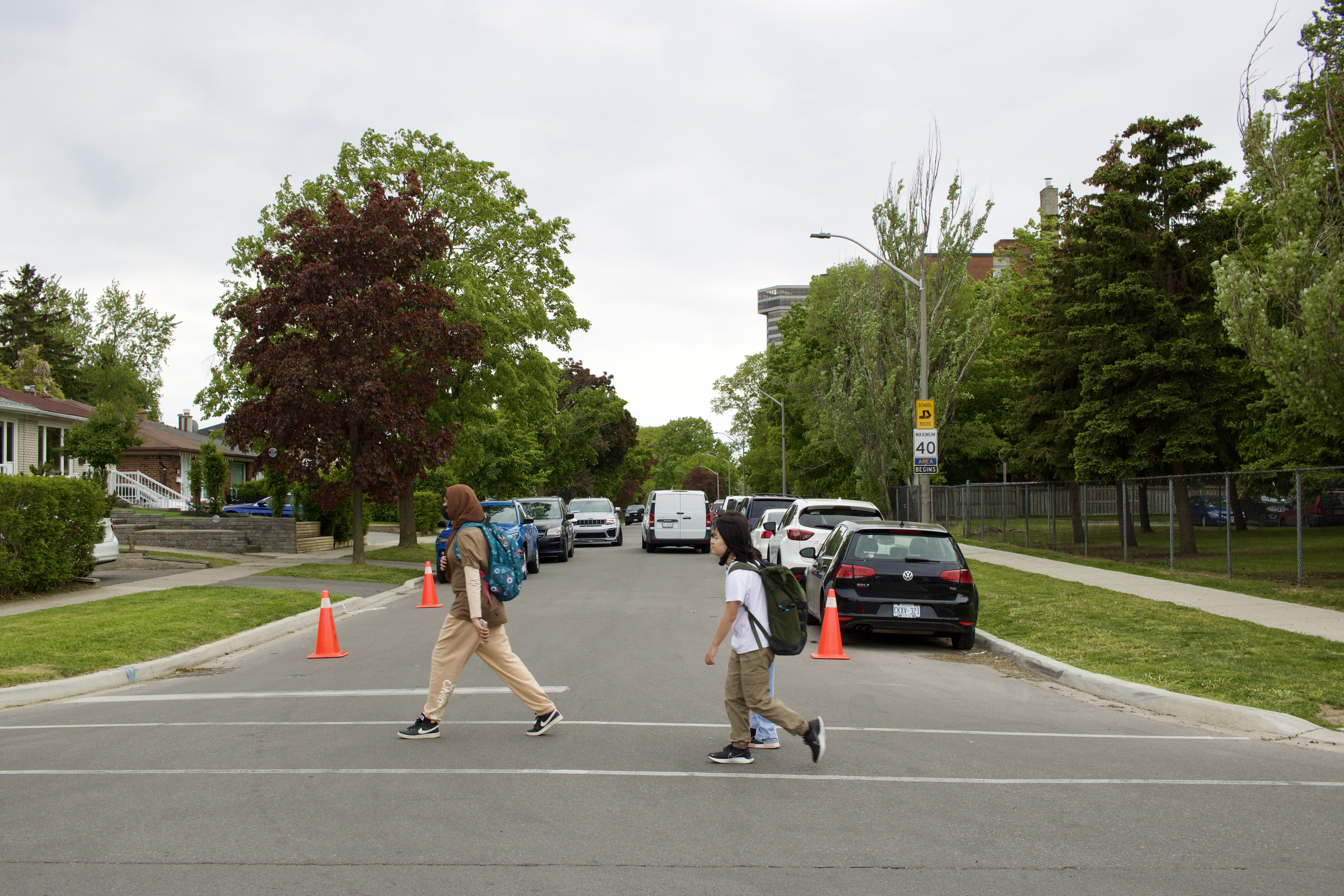The transition back to school can be an exciting time of year – a chance for a fresh start with new beginnings. Maybe you and your child(ren) are planning to set new academic goals, make new friends, or develop new healthy habits. Whatever your family’s school year “resolutions” may be, active school travel (AST) can help your child achieve them!
Getting active on the way to school (by walking, biking, rolling, scooting, etc.) can be a simple, easy way for children to meet their daily physical activity requirements while getting fresh air and socializing with others. It can also lead to improved learning and academic outcomes, with a literature review by Active Living Research finding that even a single session of physical activity can enhance attention, concentration and memory. Over time, regular physical activity can improve physical fitness, which can have more positive effects on academic performance in reading, writing, and mathematics.
To gain the most benefits out of active transportation, it’s important to plan and prepare! By being prepared, you can help your child build healthy habits that will support them throughout the school year and set them up for success.
Keep reading for some advice on how your family can walk, bike, or roll up to school with ease – and have plenty of fun doing it!
Planning for Active School Travel
Whether your child is new to AST or is already an expert on their route to school, there are resources here to help them – and you!
Make the Commitment
Making a commitment is an important first step to any behaviour change. If this is your first commitment to AST, it’s okay if your commitment is small at first, like walking to school with your child once a week. Research shows that when people commit to a small action, they are likely to commit to something bigger in the future. For those who are already AST experts, maybe you’re ready to commit to an active journey every day, year-round. Commit to whatever makes the most sense for your family!
Once you’re ready to commit, it’s important to put your commitment into writing (written commitments are much more effective than verbal ones!). It can also be helpful to tell other people about your commitment, as the more people you tell, the more likely you are to honour it. You can even take it a step further and find some AST buddies to make a group commitment with, and you can help hold each other accountable along the way.
If you must drive to school and can’t commit to AST, you can try “Drive to 5” by parking a 5-minute walk away from school. Not only will you get some exercise on the last stretch, but you can also help reduce vehicle emissions and ease congestion in drop-off areas. A short walk is always better than no walk!
Plan Your Route
Now that you’ve committed to AST, it’s time to plan the route. You can start by exploring your neighbourhood to gain a better sense of which roads and trails work best for your active mode(s) of travel.
It can be helpful to use a Routes to School Map that displays which routes around a school are best for students to safely walk and cycle. These maps include useful information like walking times and locations of bike lanes, crosswalks, traffic lights, and crossing guards. The maps also identify other active transportation initiatives around your school like Walking School Bus routes and stops, Drive to Five locations, and Wayfinding signs.
Families can make this map at home, and teachers or school boards can create them together with their students. Either way, the process of creating a good quality route map can help students learn about their neighbourhoods and engage in discussions about AST. We highly recommend making one!
Put Active Travel in Your Daily Routine
We encourage families to plan for AST and incorporate it into their daily routine. Consider creating a checklist for a school night or the morning that covers everything your family needs to get ready. For example, your routine can involve checking the weather forecast the night before and getting out the right gear to prepare for the next day’s journey. Anything you can do the night before will be a gift to yourself in the morning!
It can also be helpful to plan a 15-minute buffer into your morning routine to give enough time to get ready and out the door. You can add music into the mix by playing a ‘time to go’ song that helps to ease the morning rush and remind everyone that it’s time to go. If you’re looking for some musical inspiration you can check out this playlist we made – it’s full of fun songs about walking and wheeling (find it on Spotify!).
To help make your new routine stick and gain momentum, you can use the Hop! app to track your trips and watch them add up. If you prefer a paper-based tracker, you can print and use this trip tracking template.
Additional Resources
If you’re looking for more ideas and inspiration to help your child form healthy AST habits, take a look through our *NEW* Ideas Lab on the SchoolTravel.ca website and visit our Back to School webpage.
You can also explore some of our partner resources, like Opheas’ suite of resources to help your family get more physical activity every day, and Active for Lifes’ tips on making the walk to school more fun, getting started with active travel, and preparing for back-to-school cycling.
We wish all students and their families the best of luck on their active journeys to school this year!
Be sure to follow along with the Ontario Back to School 2022 campaign on Twitter and Facebook and look out for our upcoming campaign for International Walk to School Month (IWALK) this October.

